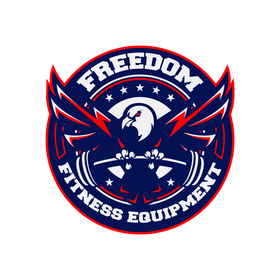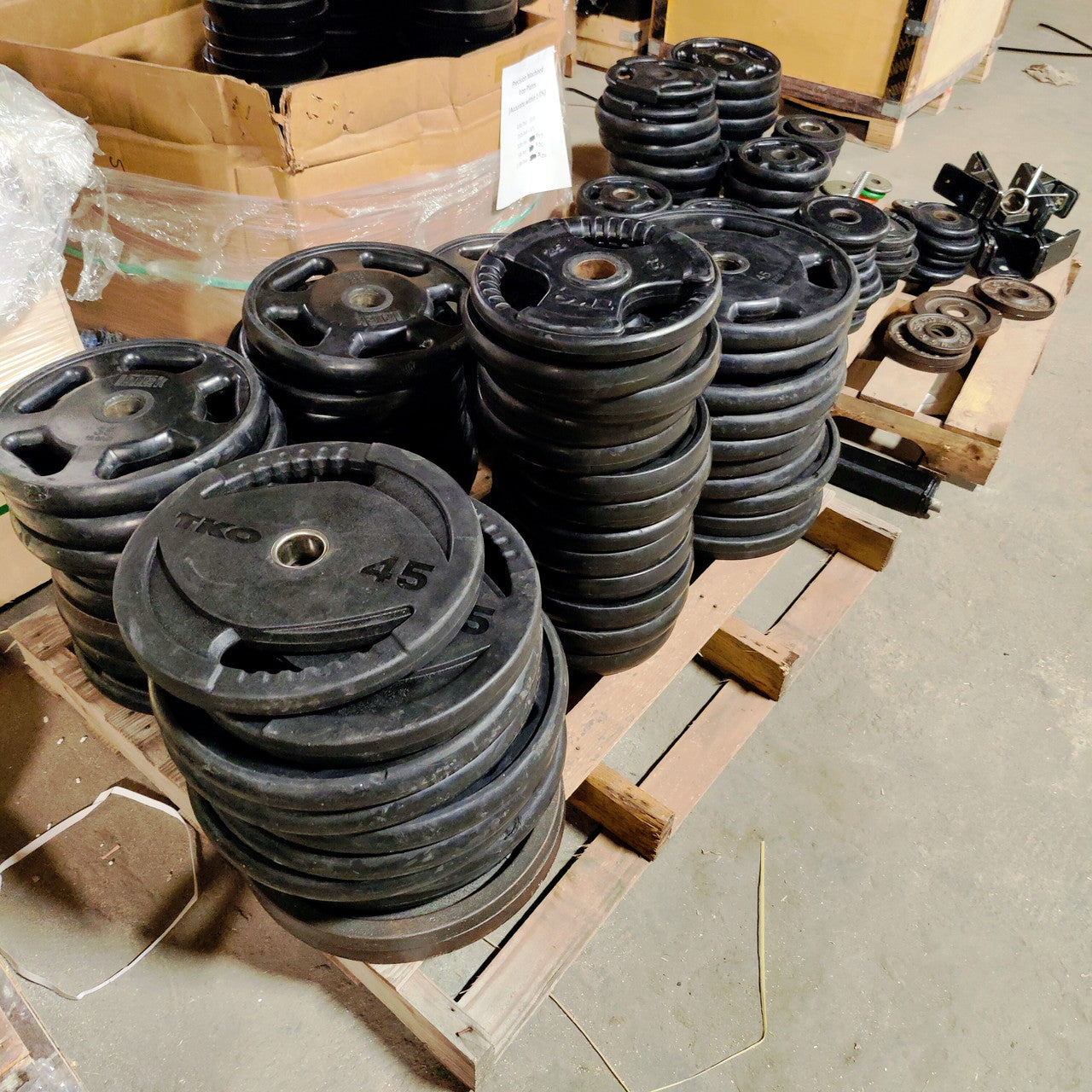Free Weights or Weight Machines - What's the Difference?

Two major types of equipment found in almost any gym and in virtually any strength training regimen include machines and free weights. On weight machines the weight is attached to a simple apparatus against which you push or pull. Common types of weight machines include the Smith machine, leg press and lat pulldown. Free weights are weights that are not attached to any sort of mechanism. Let's go ahead and take a look at some different types of free weights.
Types of Free Weights
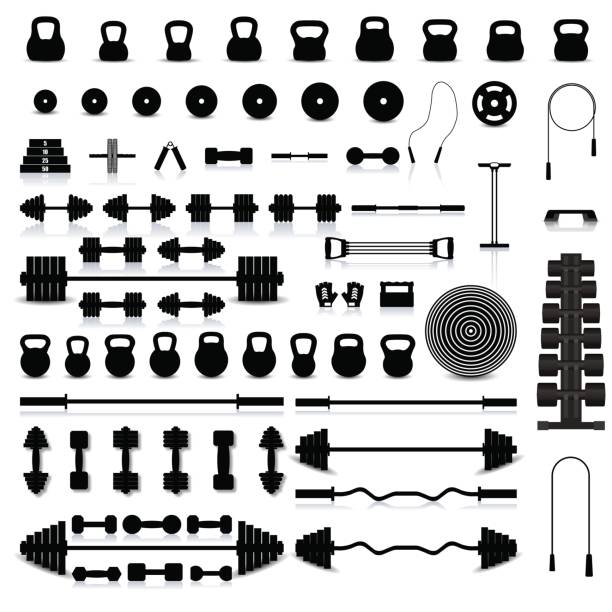
For as long as people have been lifting weights, lifting gurus have been innovating ways to improve the weightlifting experience and target muscles differently, resulting in a variety free weights with different functions and uses. Here are some of the major types of free weights you'll find in almost any gym.
Weight Plates + Barbells
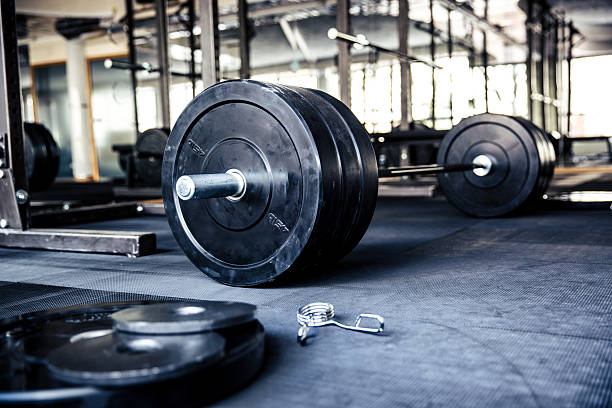
Weight plates and barbells are a free weight combo commonly used for compound lifts (ie. deadlift, squat and bench press) and Olympic lifts (the snatch, the clean and jerk and their derivatives). I wish I could leave it at that, but there are a number of different kinds of weight plates and barbells too.
As far as plates are concerned, the two most common types include iron plates and rubber bumper plates. Though often used interchangeably, a good rule of thumb to follow is that rubber plates tend to be used for Olympic lifts, as they cause less damage to the floor when dropped onto the ground, and iron plates are often used for plate-loaded machines, controlled exercises (ie. squats, deadlifts, bench) and other plate-loaded free weights.
Some examples of different kinds of barbells include the EZ Curlbar, the Hex bar, Olympic bars, powerlifting bars, and the fixed barbell, which is, in my opinion, akin to an overstretched dumbbell. Fixed barbells often have either a straight bar or a w-shaped bar similar to the EZ Curlbar.
Dumbbells
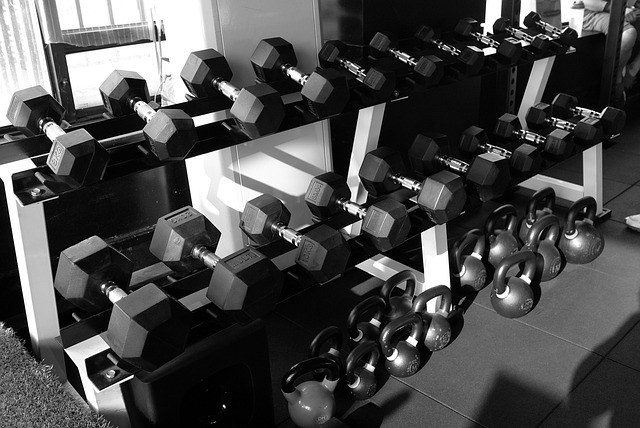
Dumbbells are perhaps one of the most quintessential examples of free weight that exists. They can be used in a wide variety of exercises for every body part. Once you begin regularly lifting weights it's not difficult to see the ways different movements can be turned into dumbbell exercises.
Kettlebells
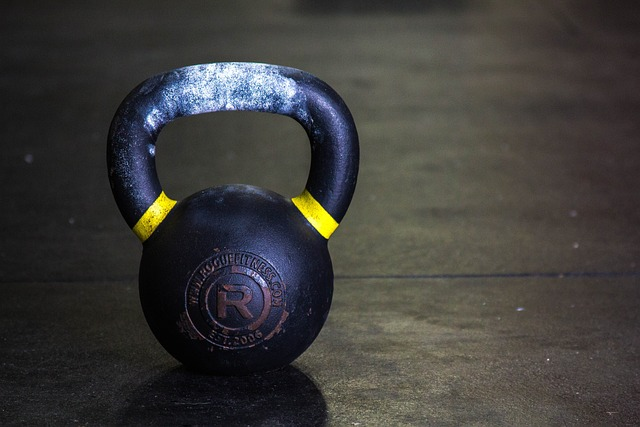
Kettlebells work many different body parts concurrently, often leaning towards the functionality side of strength training rather than the muscle-isolation side. Kettlebell exercises are also fairly notorious for getting your heart rate up and burning extra calories.
Medicine Balls
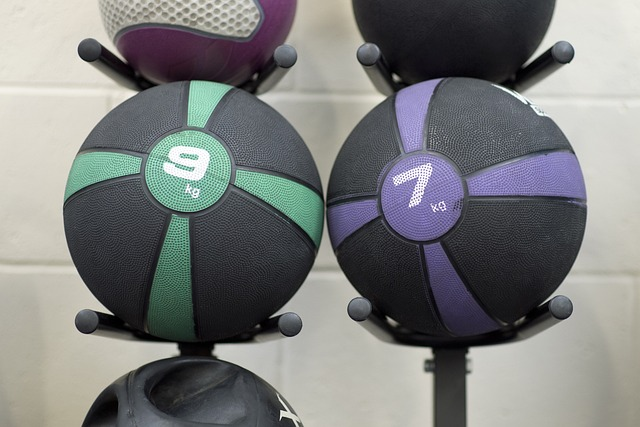
The incorporation of medicine balls into your workout routine is nothing to laugh at. Exercises using these free weights aid greatly in improving cardiovascular endurance, core strength and overall athletic performance.
Benefits + Drawbacks of Using Free Weights
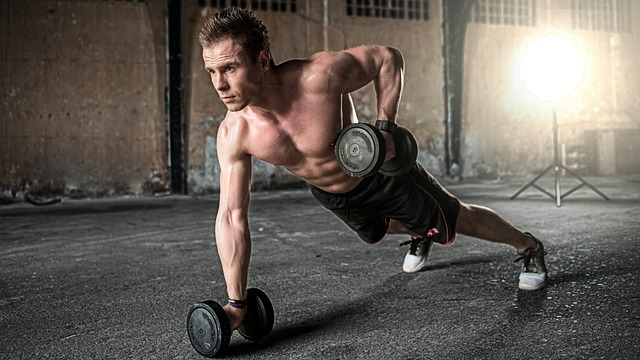
While not an exhaustive list, I did want to highlight some of my favorite benefits and drawbacks of using free weights.
Benefit #1: Fuller Range of Motion
Unlike weight machines, free weights allow the user to determine what a full range of motion (ROM) looks like for them in their current state of health. Factors that could potentially limit the ROM for a muscle group include injury, inflammation, disease, flexibility, age, joint health, daily activities...the list goes on.
Because there are so many factors that affect one's ROM for any given muscle, a "full" ROM could look very different between two people for the same exercise. For example, an incline chest press machine could cause flare-ups for someone with a recurring rotator cuff injury. Performing incline chest presses with dumbbells, however, could allow that person to perform the same movement with slightly different form and pain-free shoulders. Free weights help individualize the process of finding a full ROM.
Drawback #1: Risk of Injury
Every strength is just a weakness in the right lighting, and the full range of motion free weights permit is no different. If you're unfamiliar with (a) correct form or (b) what it feels like to correctly engage a group of muscles, it wouldn't be difficult to hyper-extend a joint, perform a movement incorrectly or overcompensate with different muscles while using free weights.
If you're using free weights that don't require a rack or safety mechanism, it's possible to drop the weights if you've exhausted your muscles or if an unexpected disruption occurs. I've accidentally dropped dumbbells plenty of times while moving them to my bench or simply because my muscles gave out mid-rep.
Granted, any type of weight training has inherent risk of injury, and injuries can occur whether you're using free weights, machines or bands. For that reason, it's important to consult more-experienced friends or a personal trainer when you first begin strength training in order to establish what good form and safety look like for you.
Benefit #2: Increased Functionality
Using free weights forces you to recruit other muscle groups in addition to the one(s) being worked, resulting in the increased strength and functionality of your body as a whole rather than just the increased strength of the targeted muscle groups. For example, when performing a seated machine shoulder press, you feel the movement in your shoulders, traps and triceps. When performing the same exercise standing with dumbbells, which requires more balance and controlled movement, you're not only engaging the aforementioned muscles but also your abdominals and lower back. In this way, you're exercising the pressing movement in addition to the body parts themselves.
Drawback #2: Limited Weight
Number for number, you're often able to lift heavier on weight machines, but weight training isn't always about lifting heavy. Yes, heavier weight means increased resistance, which results in increased muscle breakdown and increased muscle repair and growth. However, lowering the amount of weight you use, increasing the number of reps and lowering your rest periods results in heightened muscular endurance, increasing the overall functionality of your muscles and, subsequently, overall strength. So for you ego-lifters out there, you might consider this a drawback, but to everyone else - myself included - I like to think of this as a benefit!
Benefit #3: Demands Proper Form
Put simply, free weights require proper form. Yes, it's possible to use them with less-than-stellar form and still move heavy weight. However, in order to lessen the risk of injury, improve strength and continue to effectively strength train, your form cannot be overlooked. The good thing is that free weights are very helpful in establishing and maintaining good form. Start with a light enough weight to allow resistance and controlled movements. Consult more experienced people - whether a personal trainer or an online tutorial - to determine what good form looks like, and then start to notice what it feels like in your body as you perform the exercise. What muscles are being engaged? How do I position the weight relative to my body? How can I position myself to engage the correct muscle groups? Free weights allow for a gradual addition of weight and resistance to your exercises as your strength increases.
Drawback #3: Demands Proper Form
On the contrary, if you don't know what proper form looks or feels like, it's easy to continue training with improper form, which would have to be corrected later in order to prevent injury and muscle imbalances. Starting on weight machines or utilizing the experience of a personal trainer can help you establish good form that can subsequently be enhanced and maintained with free weights.
Weight Training With Free Weights
When to Use Free Weights
Free weights can be incorporated to any workout routine with a little experience, knowledge and creativity.
When Boredom Strikes.
If it ain't broke, don't fix it.
This is a common mindset in the fitness community when it comes to different training approaches, and I can honestly say that I agree with that outlook on strength training. Hands down, you're able to see progress best when you exercise consistency week to week. I will offer a caveat, however: there's absolutely room for variability if you're trying to rediscover the enjoyment in your training.
If it's your only option.
If you've made it this far in the article, you're no longer able to skip a workout using the excuse, "There's not enough equipment." Whether you're staying in a hotel, visiting a new gym or getting home workouts in, free weights are a great way to get solid strength, cardiovascular and/or functional workouts in. Free weights are a great piece of training equipment for any body (ha, get it!) in any place. If you're worried about trading the intensity of a heavy lift for free weights, increase. the reps or decrease your rest periods in order to keep your heart rate up! Don't miss out on the mental and physical health benefits of a workout just because you have naught but free weights at your disposal.
If You're Looking to Increase Functionality.
Whether you're trying to improve functional health, balance or sports performance, free weight exercises are essential for increased stability in your body, which will only lead to further improvements in your strength training.
How to Use Free Weights
Swap Machine-Based Exercises for the Same Free Weight Movements.
Perhaps your strength training program dedicates one of your leg days solely to glutes and hamstrings. Here are some simple conversions you could make to incorporate more free weights into your leg day:
-
Seated Hamstring Curls → Lying Hamstring Curls with a Dumbbell
-
Single Leg Press → Weighted Lunge (Walking or Stationary)
-
Quick training note: when performing lunges on a posterior-chain leg day, take longer strides during your lunge - your hamstrings and glutes will thank you!
-
-
Glute Drive → Weighted Glute Bridges with a Dumbbell or Barbell
-
Smith Machine Squats → Sumo Squat with a Dumbbell or Kettlebell
Do's + Dont's of Strength training with Free Weights
Do intentionally practice core stabilization and engagement for the target muscles.
Do balance your workout program with both free weights and weight machines.
Do ask for a spot if you need one.
Do adapt your free weight exercise to your ideal training style (ie. resistance training, cardio/HIIT workouts, circuit training, etc.).
Don't forget your warmup sets!
Don't ego lift! Lift as heavy as you can without compromising form.
Don't excessively swing your body or the weight.
Conclusion: Free Weights Are a Must!
Depending solely on weight machines in your workout program is a sure way to miss out on all the benefits exercise with free weights offers, which include increased stability, functionality and injury prevention. Be sure to balance your strength training with both weight machines and free weights for optimized results!
